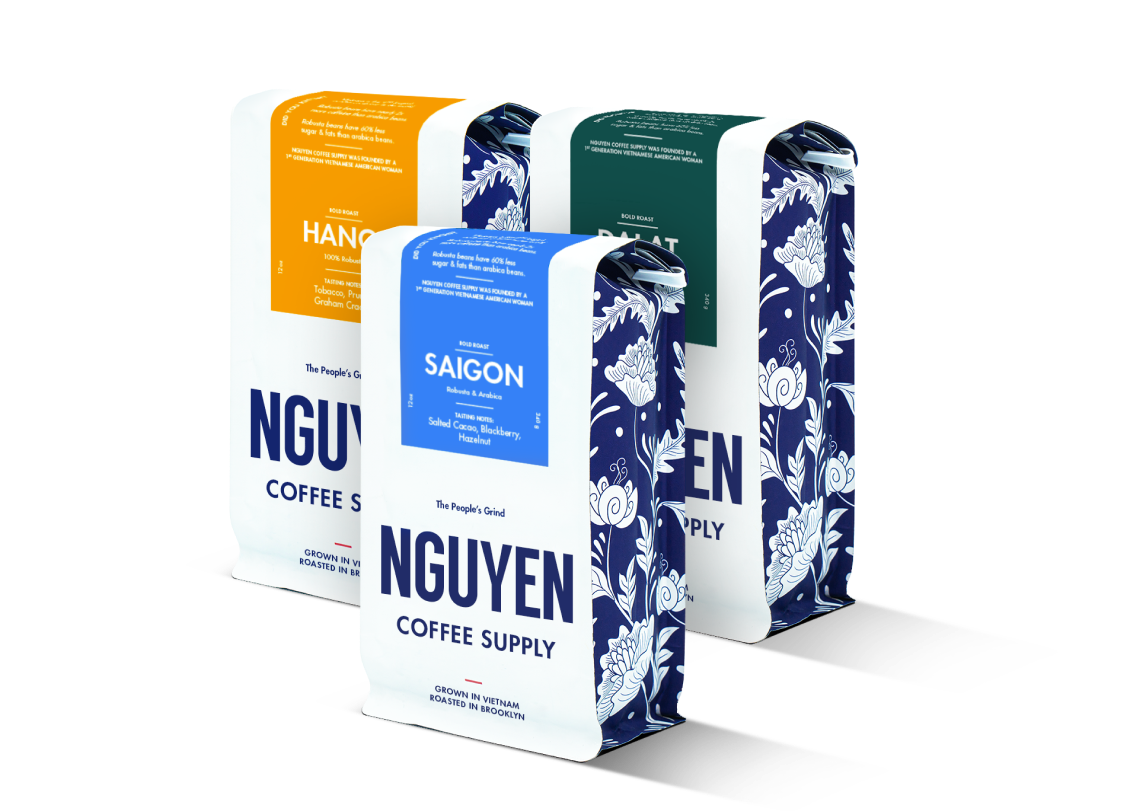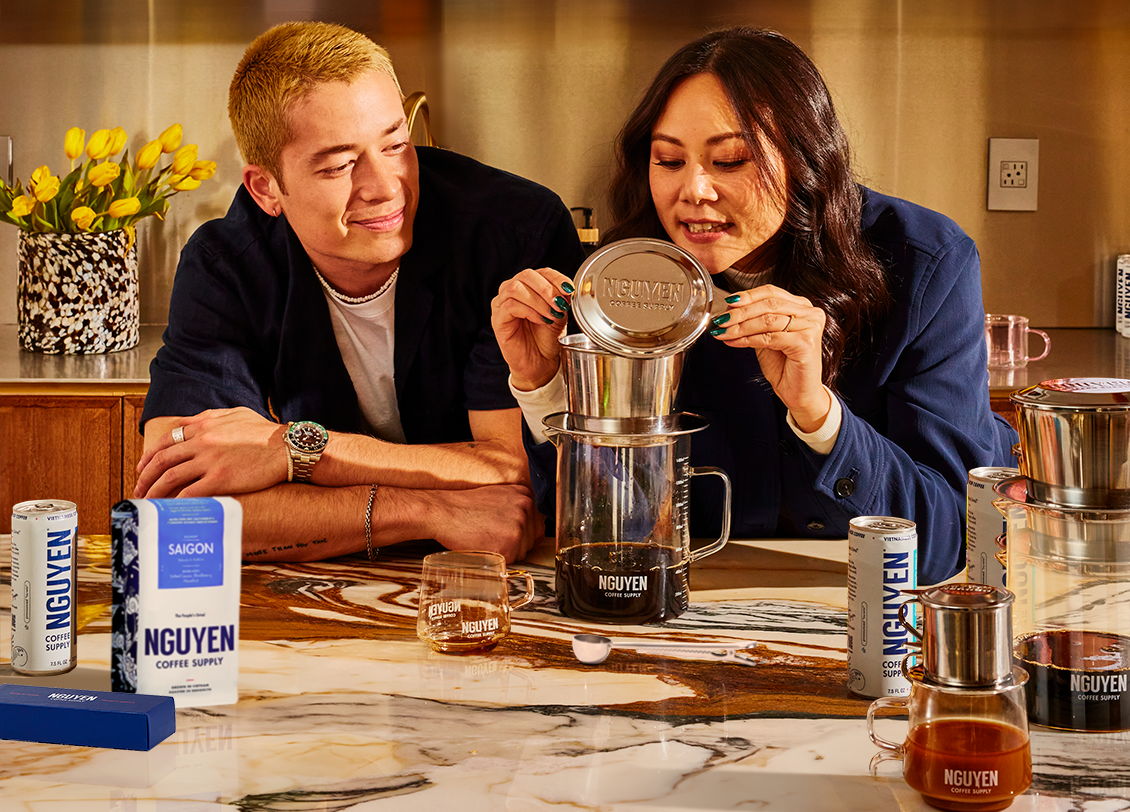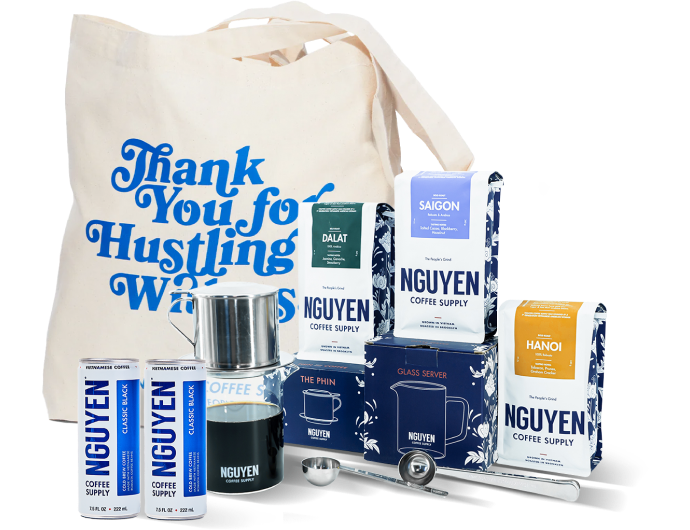

- FEATURED ON IMBIBE

Create for yourself or as a gift for your loved ones
Subscribe nowMe and mom just enjoyed the Nguyen phin drip experience. Wow. Proud of your work. We without hesitation enjoy the Vietnamese coffee and recommend your products. Thank-you to the Nguyen staff and tradition. From Canada eh!
Coffee is one of the most universally beloved beverages all around the world. From Colombia to Brazil to Vietnam, coffee spans the globe with its intoxicating aroma and powerful kick.
Did you know that Vietnam is the second largest producer of coffee in the world, after Brazil? Essentially, this means that Vietnam is a major contributor to the global coffee experience (even though many people are unaware of this fact due to lack of transparency).
In the United States, a national survey reveals that only 16% of consumers associate Vietnam with the production of coffee. Here’s the kicker -- the United States is the #2 importer of Vietnamese coffee beans. American companies are buying and using Vietnamese coffee beans in their products, and consumers are unaware of the (delicious) coffee they’re drinking when the source and origin is not stated.

So what makes Vietnamese coffee unique? For starters, Vietnam is the #1 producer of robusta beans in the world whereas other well-known countries such as Brazil and Ethiopia are known for producing arabica beans.
What’s the difference, you ask? The difference lies in the bean and the flavor.
Robusta beans are, for lack of a better word, more robust than their arabica counterparts. They contain higher antioxidant properties and have 60% less sugar and fats than arabica beans, which makes them a bolder and smoother brew. As such, robusta beans often have earthier flavor notes like chocolate and nuts with deeper mouthfeels. For folks who love some milk or cream with their coffee -- robusta beans are a creamer’s best friend!

Furthermore, robusta beans happen to be more sustainable than their arabica cousins. Whereas arabica beans must be grown in tropical climates at high altitudes, robusta beans can grow basically anywhere between sea level and higher altitudes.
Robusta beans themselves are hardier as their higher levels of caffeine, a natural insecticide and protectant, makes them more pest- and disease-resistant than arabica beans. Being more resistant to outside damages, robusta coffee trees also produce higher yields with less occupied land and easier growing conditions (arabica trees require light shade). All in all, robusta beans are easier, more cost-effective, and more sustainable to produce – AND they’re delicious!
Those who drink Vietnamese coffee for the first time often note that it’s a flavor they’ve never had before, yet simultaneously feel an instant connection with. A consequence of bean type and brewing method, true Vietnamese coffee distinguishes itself as a heavy hitter: bold, strong, and complex. A far cry from conventional mellow and one-dimensional coffees, Vietnamese coffee beans provide an experience unlike any other. When served with condensed milk, the resulting brew is a beverage simultaneously bold, sweet, refreshing, and savory.

Curious? Try it for yourself. If you think Vietnamese coffee is too bitter or burnt-tasting, you haven’t had the real deal (and you can always start with Vietnamese arabica). We promise you’ll be team Vietnamese coffee on first sip.
Source: Coffee & Cocoa International, 2019